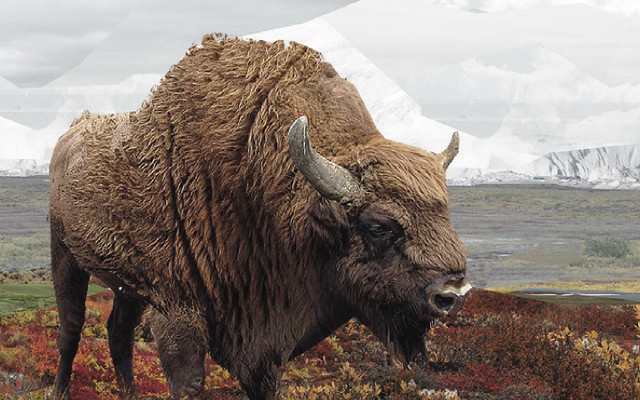The steppe bison or steppe wisent (Bison priscus)[1] is an extinct species of bisonthat was once found on the mammoth steppe where its range included Europe,[2]Central Asia,[3] Northern Asia,[4][5][6] Beringia, and North America,[7][8] from northwest Canada to Mexico during the Quaternary.
Steppe bison appear in cave art, notably in the Cave of Altamira and Lascaux, and the carving Bison Licking Insect Bite, and have been found in naturally ice-preserved form.[10][13][14]
Blue Babe is the 36,000-year-old mummy of a male steppe bison which was discovered north of Fairbanks, Alaska, in July 1979.[15] The mummy was noticed by a gold miner who named the mummy Blue Babe – “Babe” for Paul Bunyan’s mythical giant ox, permanently turned blue when he was buried to the horns in a blizzard. (Blue Babe’s own bluish cast was caused by a coating of vivianite, a blue iron phosphate covering much of the specimen.)[16] Blue Babe is also frequently referenced when talking about scientists eating their own specimens: the research team that was preparing it for permanent display in the University of Alaska Museum removed a portion of the mummy’s neck, stewed it, and dined on it to celebrate the accomplishment.[17][18]
In 2011, a 9,300-year-old mummy was found at Yukagir in Siberia.[19]
(From Wikipedia, June 2018)




